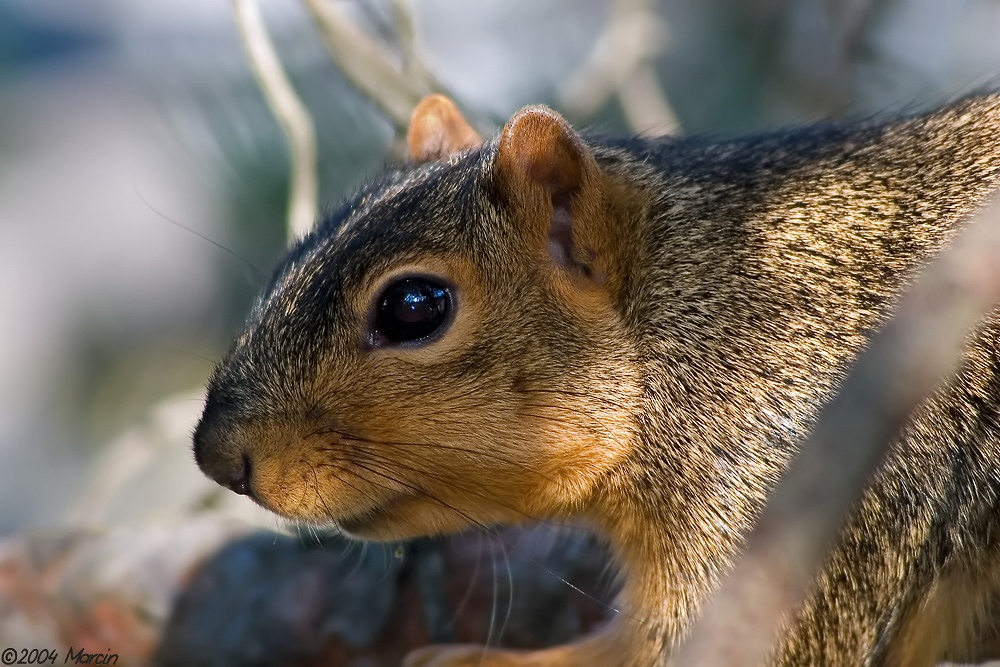

Connecting patches of suitable suburban habitat is another possible strategy. The Big Cypress fox squirrel’s tolerance of suburban habitat may be an adaptation advantage as climate change begins to drive shifts in human development patterns.Given the high degree of habitat fragmentation already present within the squirrel’s range, protecting connected patches of habitat wherever possible should be prioritized.Alternative conservation management methods to use when fire is not possible should also be explored. Implementing an appropriate fire regime for as long as possible will increase habitat resilience to climate change.It usually nests in a tree hollow, if it can't find one it will build a leaf nest in the a crotch in a tree.The primary factors contributing to vulnerability of the Big Cypress fox squirrel are sea level rise, presence of barriers, habitat fragmentation, runoff and storm surge, and alterations to biotic interactions and disturbance regimes. It spends most of the day eating and gathering and storing food. They are independent when they are about three months oldīehavior The fox squirrel is a solitary animal, although it will share a feeding area with other squirrels. They will begin to climb about the tree when they are seven or eight weeks old and climb down to the ground at about ten weeks.

Their eyes will open when they are five weeks old, and they are weaned when they are eight weeks old. 45 days after mating the female gives birth to a litter of two to four young, usually in a nest in a hollow tree. The successful male will then protect the female from the other males. Usually, more than one male will chase or follow a female. Life Cycle The fox squirrel can mate at any time of the year, but mating usually reaches its peak in December and June. The fox squirrel locates its stashes using its keen sense of smell. It also eats green shoots and buds, fruits, berries, corn, insects, moths and beetles. In the south, it can also be found in cypress and mangrove swamps.ĭiet The fox squirrel eats acorns, hickory, walnut, beech, mulberry and hawthorne seeds. The fox squirrel lives deciduous and mixed forests. Its range also extends into northern Mexico and southern Canada. It is not found in New England, most of New Jersey, western New York and northern and eastern Pennsylvania. Range The fox squirrel can be found in the eastern and central United States west to the Dakotas, Colorado, and Texas. The Delmarva fox squirrel has a bushy tail and is gray with a white belly. It is now found on the eastern shore of Maryland and Virginia. It has gray and black fur on its back and orange-colored fur on its belly. The fox squirrel is also known as the eastern fox squirrel.Ī subspecies of the fox squirrel, the Delmarva fox squirrel ( Sciurus niger cinereus), was once found in the Delmarva Peninsula, southeastern Pennsylvania, and southern New Jersey. The fox squirrel is a large tree squirrel, about 21 inches long and 1 1/2 to 2 pounds.

In the southern part of its range, it is black and brown with a white stripe on its face and a white tip on its tail. In the western part of its range, it is gray above and rust colored on its undersides. In the northeastern part of its range, it is gray above with yellowish undersides. The fox squirrel is the largest tree squirrel. ICUN Redlist - World Status: Least Concern


 0 kommentar(er)
0 kommentar(er)
